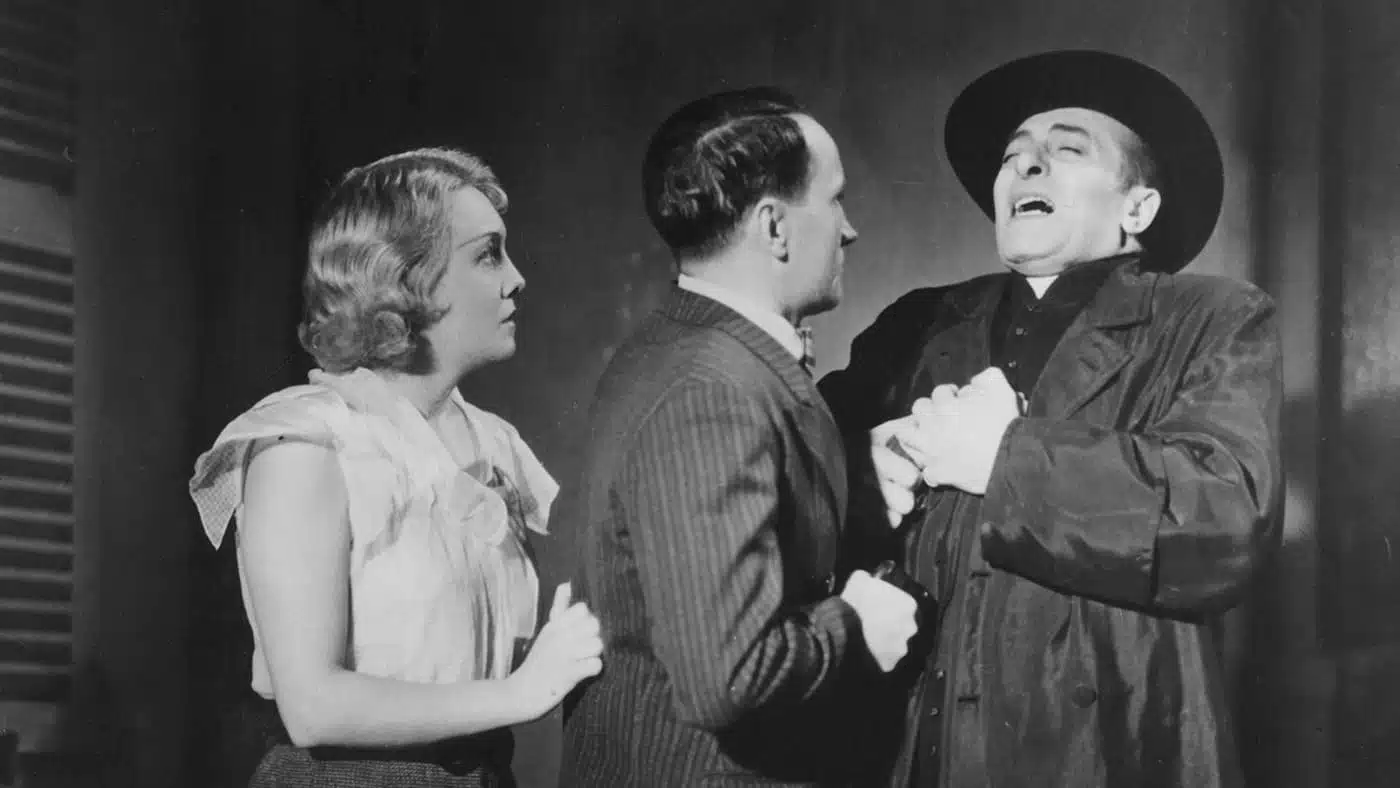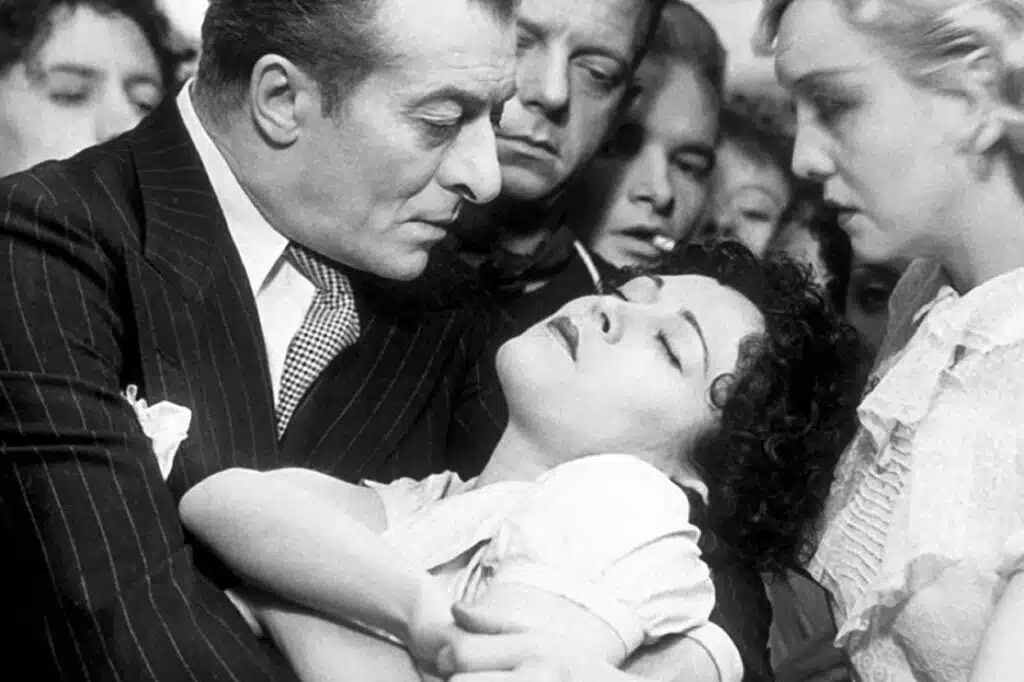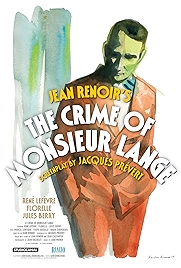When talk turns to the greatest films of all time, Jean Renoir is usually in there. And when talk turns to Renoir, it’s La Règle du Jeu or La Grande Illusion which most often figure, with Boudu Saved from Drowning sometimes making an appearance.
Le Crime de Monsieur Lange not so much. Made in 1936, the year before La Grande Illusion, it has been eclipsed by it in the decades since, though it’s a virtuoso piece of film-making with a remarkable camera, brilliant performances and a story that goes right against the grain.
A man and a woman on the run turn up at a bar near the border begging for a room for the night. The half-drunk locals know there’s a murderer and his woman on the loose and are certain these two are the wanted duo. While the locals are discussing among themselves what to do about it, and whether to turn them in, the woman interrupts them, sits down among and lays her cards on the table. Yes, we are Valentine (Florelle) and the fugitive Amédée Lange (René Lefèvre), and yes, he’s wanted for murder. But before you call the cops, let me tell you our story.
Back we dissolve, to the city, where M. Lange is a talented employee at a printing works and Valentine is his would-be girl, a chirpy laundress. Lange’s boss, the vupine Batala (Jules Berry), is a man who fills his days either bilking his employees, avoiding creditors or sexually propositioning anything female in his field of vision.
One day, the debt mountain huge and having raped the beautiful Estelle (Nadia Sibirskaïa), who is now pregnant, Batala disappears. And when news arrives that the train he was on was involved in a crash, everyone assumes he is dead.
His employees, facing penury, decide to turn Batala’s company into a cooperative. It is immediately a roaring success, with Lange becoming its star on account of the Arizona Jim stories he writes.
It’s only when Batala suddenly returns, as if from the grave, demanding to take back control of the business, that the normally mild mannered Lange reacts and, perhaps aping his gun-toting hero Arizona Jim… Dissolve back to the bar, where, in defence lawyer style, Valentine concludes with a “you, the jury” flourish and invites her audience to decide – call the police or let the couple make a run for the border.
Often described as propaganda for the left-aligned Popular Front, Le Crime de Monsieur Lange actually takes very little interest in the politics of Lange’s work situation or of the mechanics of the setting up and running a cooperative. It’s background stuff. Renoir is much more interested in human relations, which is why the film actually continues to work so well.
All his main characters are introduced in lightning fingernails, and even minor characters, like the wretched Estelle, have rounded characters. Peripheral figures have something to do, say and contribute, as if life were bursting out everywhere and Renoir’s camera were struggling to capture it.
Renoir’s camera. What a remarkable thing it is, even all these years later. Towards the end, Lange rushes downstairs to confront Batala and Renoir tracks him first through the upstairs rooms, then down the staircase. Lange arrives in the courtyard, on our right, and moves to the right of the frame towards Batala. Renoir, instead of following him by tracking right, swings his camera in the opposite direction, a move that does something cameras almost never do… it marks time… builds suspense. That 270 degree swing (or whatever it is) takes time to accomplish and maybe the dizzying sweep of it also conveys Lange’s state of mind.
There are other bravura touches. Like the moment when Renoir deliberately frames Batala to look like Bela Lugosi’s Dracula (the soundtrack suddenly switching into horror mode), which is neat bit of shorthand and a joke. Or a shot looking out of the window into a courtyard which suddenly pulls back and into the upstairs room of the printing works, all in one mad impossible movement.
Throughout, Renoir’s lyrical painterly eye (he’s the son of August Renoir, after all) means everything looks gorgeous, even more gorgeous in the 4K restoration you should definitely watch this on. It’s not perfect – it’s obvious the original celluloid was shot away – but good enough to understand what he’s doing. A minor film for Renoir, but an achievement beyond the dreams of most film-makers.
Le Crime de Monsieur Lange – Watch it/buy it at Amazon
I am an Amazon affiliate
© Steve Morrissey 2022


